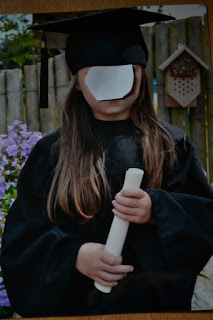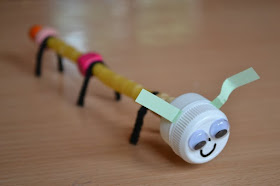I was looking at my shelf of Pratical life exercises and was planning today what different activities I should introduce next September. Kids need variety and diversity. I always rotate the exercises throughout the year according to our learning theme or the season. A lot of thoughts and preparation goes into the Practical Life area,and yet this isn't an area which is much talked about in theory. Well, at least not as much as the language or maths area. Each PL exercise has a direct and indirect aim. The main objectives are to develop the children's fine motor skills and increase their self esteem. This is why I thought about writing this post on the importance of the Prepared Environment in the Practical Life Area. OK, OK. Sounds ominous and maybe boring. But any of you who LOVE the Montessori method of teaching will definitely know what I am on about. So here it goes.
The exercises in Practical Life are the very heart of Montessori education as they represent real life activities with real apparatus. They are a bridge between the home and the school environment. Practical Life Exercises can be categorized into four different groups: preliminary movements (learning to walk on a line, to line up, to close and open door etc..), care of the person (wash one’s hand, fasten up one’s jacket etc..), social skills (grace and courtesy), and care of the environment (using a dustpan and brush, watering the plants, looking after the pets, cleaning up a table etc..). While appearing quite simple and repetitive, Practical Life activities are highly purposeful. A child engaged in such activities must demonstrate concentration, sense of order, respect, and refinement of fine motor skills. Because the child also learns to care for himself (buttoning his own coat, washing hands, etc..) and for his environment (feeding the pets, sweeping the floor, cleaning spillings etc..), he develops a strong sense of independence at the same time.


Montessori classroom across the world are all similar and based on the theory that the prepared environment should be simple, beautiful and ordered. Materials should be set out on low shelves, open and available to each child.Tables and chair are child-sized, promoting the children's indepedence and self esteem as well as freedom of movement. What else do you see in a Montessori classroom? Attractive, colorful and natural materials, calling to the child “Come and use me!”. One of the child's first and fundamental tasks when entering a Montessori prepared environment is to adapt and orient himself to his immediate environment and the exercises of Practical Life are one of the best ways to do so.
Airy room, child-sized tables & chairs
So how relevant is the Prepared Environment to the Practical Exercises? Well, first of all, I guess I could keep things in large toy chests or boxes on the shelves. It would probably make my life easier and this is what most of us do in our own home (if we don't follow the Montessori principles at home). Instead, in our Montessori prepared environment, we use trays, prepared and sorted on uncluttered shelves for ease of access . Every practical life exercise has its place. This makes finding and putting materials away easier and enjoyable. Each tray contains everything required for any given activity so the child does not need to seek the guide in order to start or finish a lesson. The entire environment is created in such a way to help the child to fulfill his natural tendency towards independence. Again, I could be very lenient or flexible and let the child put the trays wherever as long as it was on the Practical Life shelving units. However, in a Montessori well prepared environment, each piece of material remains in the same designated space. This allows the child to orient himself and gives him a sense of security as well as making him more confident and comfortable in the environment. Because these activities are so easily accessed and so ordered, the child tends to repeat each exercise again and again.


So, you have guessed, order is essential in the Montessori environment, "external order of the classroom leads to internal order and orderly thoughts of the child thus allowing the child to develop a logical mind". For example, the preliminary exercises (rolling a mat, carrying a chair) assist in creating order and routine in the classroom. But they are themselves facilitated by the way they are presented to the child and by how reachable they are on the child-sized shelves. Fundamental Skills such as pouring, spooning, or tonging also follow a sequential order . In a prepared environment, the activity are presented on a tray presenting all the materials required to perform the activity. The child learns with the guidance of the directress how to use them in sequence and how to complete the work cycle.
Some of you may argue that the children will achieve the same in a playschool home corner, when they pretend to be mammies and daddies, preparing dinner or looking after the dolls. I am not denying the fact. However, the advantage of performing these activites in a prepared environment add another dimension: discipline. Pretend play can often lead to chaos: kitchen utensils are droped everywhere even in the doll's bath, the plastic food is placed into the doctor's bag, and nothing is put back into place, because the children (in my own exerience) end up being frustrated with the game. However, in the prepared environment of a Montessori classroom, with the opening & closing of assorted bottle for instance, a child can create an activity with a beginning, a middle, and an end. There are limits and boundaries, set up/imposed by the prepared environment. The child then becomes independent within the boundaries and limits of the activity. He is free to choose the activity, to repeat the activity, as long as he does it within the boundaries and limits of the activity. Opening and closing bottles is an activity with boundary (the tray itsel); it had limits (we only screw and unscrew back and forth). It had a beginning: the child gets out the work and places the bottles on the mat; a middle: the child opens and closes as many times as he wishes; and an end: the child puts the bottles back in the box and the box with the mat back on the shelf. Order and routine facilitated by the prepared environment under the guidance of the directress.
Have you also noticed another essential characteristic of the Prepared Environment in the Practical Life Area? All materials are real, attractive and natural. Children love imitating adults and learn from it. But do you think they would be attracted by a "pretend" plastic jug or a "fake" knife? Why sweep if you are given a “toy” brush? The Prepared environment must provide children with attractive real-sized materials. Montessori believed that the child must be offered what is pleasing to the eye. This is why all materials presented on the Practical Life shelves always capture the interest of the child: sweeping brushes are colourful and decorated, jugs are made of real glass or porcelain with designs on them, napkins to be folded are made of colourful cotton or linen etc… No plastic. Just the real thing!!

In a nutshell, the children hugely benefit from exercises of Practical Life that are part of a prepared environment. First of all, these activities (which are usually the first ones introduced to a child entering a Montessori classroom) tend to normalise a child in a total new environment, because they are activities they have see done in their own homes. They also help a child to grow in intelligence, develop his self-esteem and his independence and make him valued and useful.




































![The Very Hungry Caterpillar [Board Book]](http://ecx.images-amazon.com/images/I/415zAVZ9TiL._BO2,204,203,200_PIsitb-sticker-arrow-click,TopRight,35,-76_AA300_SH20_OU02_.jpg)





